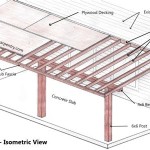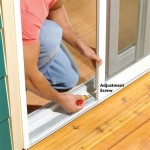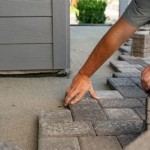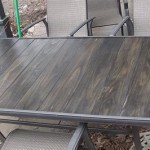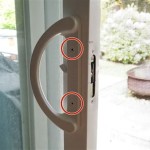Filling Gaps Between Patio Stones: A Comprehensive Guide
A patio can significantly enhance the aesthetic appeal and functionality of an outdoor space. However, the longevity and appearance of a patio are heavily reliant on the materials used to fill the gaps between the patio stones. Over time, these gaps can become susceptible to weed growth, insect infestations, and erosion, ultimately compromising the integrity and beauty of the patio. This article explores the various options available for filling these gaps, examining their advantages, disadvantages, and appropriate applications. Understanding these factors is crucial for selecting the most suitable material to ensure a durable, attractive, and functional patio surface.
The selection of the appropriate filler material is not merely an aesthetic choice. It also impacts the patio's ability to withstand environmental factors, resist weed intrusion, and maintain structural stability. Ignoring the need for a suitable filler can lead to costly repairs and premature deterioration of the patio. From polymeric sand to traditional mortar, the options are diverse, each offering a unique set of characteristics that must be carefully considered in relation to the specific patio design and environmental conditions.
Understanding the Different Types of Patio Stone Gap Fillers
Several materials are commonly employed to fill the gaps between patio stones, each exhibiting distinct properties and suitability for different applications. These materials can be broadly categorized into polymeric sand, regular sand, gravel, mortar, and ground cover plants. A detailed examination of each option is essential to making an informed decision.
Polymeric Sand: Polymeric sand is a mixture of fine sand and polymer additives. When activated with water, the polymer binds the sand particles together, creating a flexible yet firm joint filler. This rigidity inhibits weed growth and resists erosion, making it a popular choice for patio applications. The flexibility of the polymeric bond allows for some movement of the patio stones without cracking or crumbling, a significant advantage in areas with fluctuating temperatures. However, the installation of polymeric sand requires careful adherence to manufacturer instructions to avoid staining the patio stones or creating a hazy residue on the surface. It is also crucial to select a polymeric sand formulated for the specific joint width of the patio to ensure proper bonding and prevent premature failure. The cost of polymeric sand is generally higher than regular sand, but the increased durability and reduced maintenance often justify the expense.
Regular Sand: Regular sand, typically masonry or paving sand, is a more economical option for filling gaps between patio stones. However, it lacks the binding properties of polymeric sand and is therefore more prone to erosion and weed growth. The sand can be easily washed away by rain or dispersed by wind, requiring frequent replenishment. While regular sand can be a suitable option for patios with narrow joints and minimal exposure to the elements, it is generally not recommended for high-traffic areas or patios located in areas with heavy rainfall. The ease of installation is a significant advantage of regular sand, as it simply requires sweeping the sand into the joints. However, the need for frequent maintenance significantly outweighs this benefit in many situations.
Gravel: Small gravel or pea gravel can be used to fill the gaps between patio stones, particularly in informal or rustic patio designs. Gravel provides good drainage and can prevent water from pooling on the patio surface. However, gravel is not suitable for areas with high foot traffic as it can be uncomfortable to walk on and may shift and scatter over time. It also offers little resistance to weed growth, requiring regular weeding or the application of herbicides. The aesthetic appeal of gravel can be enhanced by selecting gravel of a contrasting color or texture to the patio stones. However, the practical limitations of gravel as a joint filler make it a less desirable choice for many patio applications.
Mortar: Mortar is a traditional option for filling gaps between patio stones, creating a strong and durable joint. Mortar is a mixture of cement, sand, and water, and it hardens to form a rigid barrier against water penetration and weed growth. Mortared joints are aesthetically pleasing and can complement the overall design of the patio. However, mortar is not suitable for all patio designs. Mortar is a permanent solution and does not allow for any movement of the patio stones, which can lead to cracking and crumbling in areas with fluctuating temperatures or unstable soil conditions. The installation of mortar requires skill and experience, as improper mixing or application can result in weak or unsightly joints. The cost of mortar is generally higher than sand or gravel, and the repair of damaged mortar joints can be time-consuming and expensive.
Ground Cover Plants: An increasingly popular and aesthetically pleasing alternative to traditional fillers is the use of ground cover plants. Creeping thyme, chamomile, and sedum are commonly used to fill the gaps between patio stones, creating a natural and visually appealing patio surface. Ground cover plants help to soften the hard lines of the patio stones and provide a touch of greenery to the outdoor space. They also help to suppress weed growth and improve the drainage of the patio. However, ground cover plants require regular maintenance, including watering, fertilizing, and trimming. They are also susceptible to damage from foot traffic and may not be suitable for high-traffic areas. The selection of the appropriate ground cover plant depends on the local climate, soil conditions, and the amount of sunlight the patio receives.
Factors to Consider When Choosing a Filler Material
Several factors should be considered when selecting a filler material for patio stone gaps. These factors include the joint width, the type of patio stone, the climate, the amount of foot traffic, and the desired aesthetic appearance. A careful assessment of these factors will help to ensure that the chosen filler material is appropriate for the specific patio application.
Joint Width: The width of the gaps between the patio stones is a critical factor in determining the appropriate filler material. Narrow joints, typically less than one inch wide, are best filled with sand or polymeric sand. Wide joints, typically greater than one inch, can be filled with gravel, mortar, or ground cover plants. Using an inappropriate filler material for the joint width can lead to premature failure and increased maintenance costs. For example, using regular sand in wide joints will result in rapid erosion and weed growth, while using mortar in narrow joints may not allow for sufficient bonding and can lead to cracking.
Type of Patio Stone: The type of patio stone used in the construction of the patio can also influence the selection of the filler material. Natural stone, such as flagstone or slate, often has irregular shapes and varying joint widths, which may require a more flexible filler material, such as polymeric sand or ground cover plants. Manufactured pavers, which have uniform shapes and consistent joint widths, can be filled with a wider range of materials, including sand, polymeric sand, or mortar. The color and texture of the patio stone should also be considered when selecting a filler material to ensure a cohesive and aesthetically pleasing appearance.
Climate: The climate in which the patio is located can significantly impact the performance of the filler material. In areas with heavy rainfall or fluctuating temperatures, it is essential to select a filler material that is resistant to erosion, cracking, and weed growth. Polymeric sand and mortar are generally more durable in harsh climates than regular sand or gravel. Ground cover plants should be selected based on their ability to withstand the local climate conditions. In areas with hot, dry summers, drought-tolerant plants are preferred. In areas with cold, wet winters, plants that can tolerate frost and snow are essential.
Foot Traffic: The amount of foot traffic the patio receives is another important factor to consider. For high-traffic areas, a durable and stable filler material, such as polymeric sand or mortar, is recommended. Regular sand and gravel are not suitable for high-traffic areas as they can be easily displaced and may become uncomfortable to walk on. Ground cover plants may also be damaged by excessive foot traffic and should be planted in areas with minimal pedestrian activity.
Desired Aesthetic Appearance: Ultimately, the choice of filler material should also align with the desired aesthetic appearance of the patio. Sand and polymeric sand create a clean and uniform look, while gravel provides a more rustic and informal appearance. Mortar can be used to create a traditional and elegant look, while ground cover plants add a touch of greenery and natural beauty. The selection of the filler material should complement the overall design of the patio and enhance its visual appeal.
Step-by-Step Guide to Filling Gaps Between Patio Stones
The process of filling gaps between patio stones varies depending on the selected filler material. However, some general steps apply to most applications. These steps include preparing the area, applying the filler material, and finishing the surface. Adhering to these steps will ensure a successful and long-lasting result.
Preparation: Before filling the gaps, it is essential to thoroughly clean the patio surface. Remove any debris, dirt, weeds, and loose material from the gaps using a stiff brush, vacuum cleaner, or pressure washer. Ensure that the patio surface is dry and free from any standing water. For mortar applications, it is recommended to dampen the patio stones slightly to improve adhesion. For polymeric sand applications, it is crucial to follow the manufacturer's instructions regarding the moisture content of the patio surface.
Application: The application method depends on the chosen filler material. For sand and polymeric sand, spread the material evenly over the patio surface and sweep it into the gaps using a broom or brush. Compact the material into the gaps using a hand tamper or a vibrating plate compactor. For polymeric sand, activate the material with water according to the manufacturer's instructions. For mortar, mix the mortar according to the manufacturer's directions and apply it to the gaps using a trowel or grout float. Smooth the mortar surface and remove any excess material from the patio stones. For ground cover plants, prepare the soil in the gaps by adding compost or other organic matter. Plant the ground cover plants according to the recommended spacing and water them thoroughly.
Finishing: After applying the filler material, it is essential to finish the surface properly. For sand and polymeric sand, sweep away any excess material from the patio surface. For polymeric sand, avoid walking on the patio for the recommended curing time. For mortar, mist the mortar joints with water periodically during the curing process to prevent cracking. For ground cover plants, water them regularly and trim them as needed to maintain their shape and size. Protecting the newly filled gaps from excessive foot traffic and harsh weather conditions during the initial curing or establishment period is essential.

How To Fill Gaps In Your Patio Or Paving Slabs Renovated Co

How To Fill Gaps In Your Patio Or Paving Slabs Renovated Co

Filling Gaps Between Pavers How To Fill Large S In Flags

How To Repoint Paving Slabs

The Best Ways To Fill Joints Between Paving Slabs

What Is The Best Material To Put Between Flagstone Firstfruits Landscaping

Our Top 4 Solutions For Filling Paving Stone Gaps Grand River Natural

Filling Gaps Between Paving Stones
Patio Concrete Slabs Fill Gaps Ceramic Tile Advice Forums John Bridge

What Is The Best Material To Put Between Flagstone Firstfruits Landscaping
Related Posts

